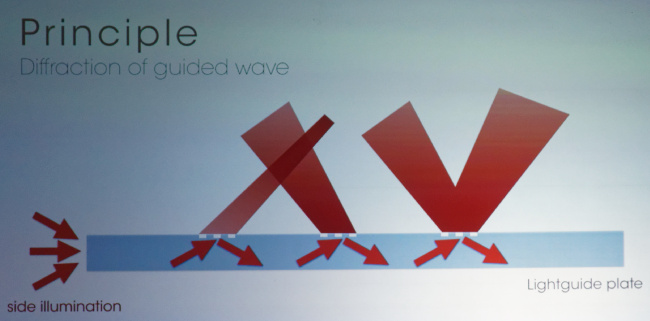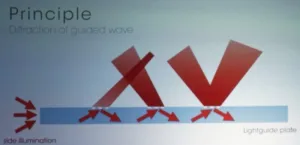 David Fattal is founder and CEO of Leia, a company that was founded to develop holographic displays for mobile devices.
David Fattal is founder and CEO of Leia, a company that was founded to develop holographic displays for mobile devices.
The world today has the cloud, connectivity, content and AI and we increasingly rely on the digital world. Who, these days, does a division calculation in their head, he asked? (well I do simple ones, but I’m very old! – Man. Ed.)
Lewia is working on lightfield displays which can be used in smartphones, HUDs and near eye displays, but with support for the focusing mechanism of the human eye. In standard displays, the same colour is sent in all directions, but in lightfield displays, the light in different directions can be different colours and levels of brightness.
Parallax barrier displays are fundamentally lightfield displays and they have been developed for smartphones, but they lose a lot of light, so they are not really usable. The next step is to use lenticular lenses but that limits the way that you can control the light.
Leia has a new way of creating a lightfield using diffraction from light injected from the side of a transparent substrate. The light bounces around using TIR but is extracted by the diffraction features. Simple optics can be implemented using different patterns to allow the design of a specific lightfield. The other advantage is that the light that is transmitted through the display is almost unaffected. That makes it ideal for AR but also for smartphones where a diffractive display could be put on top of a regular display.

Special design of the backlight means that you can design a very smooth transition from one view to another, without the jumps that are seen in lenticular systems.
Typically in diffractive systems, the diffraction grating acts as a prism and splits the white light, but Leia has solved that problem. Leia has developed the concept of ‘Holographic Reality’ with holograms that you can feel and touch without special eyewear or other technology. This uses hover touch. In the future, the company wants also to adopt non-touch, ultrasound-based, haptics.
Leia plans to roll out a smartphone type display by the end of 2017. It is also looking at automotive applications, where the diffraction can be used to direct the light only towards the driver.
In near to eye systems, the grating can be used to allow focus in the eye. The company also wants to develop digital signage applications for retail and other use.
(For more comments see our article from the show floor – 3D Developments at SID 2016)

